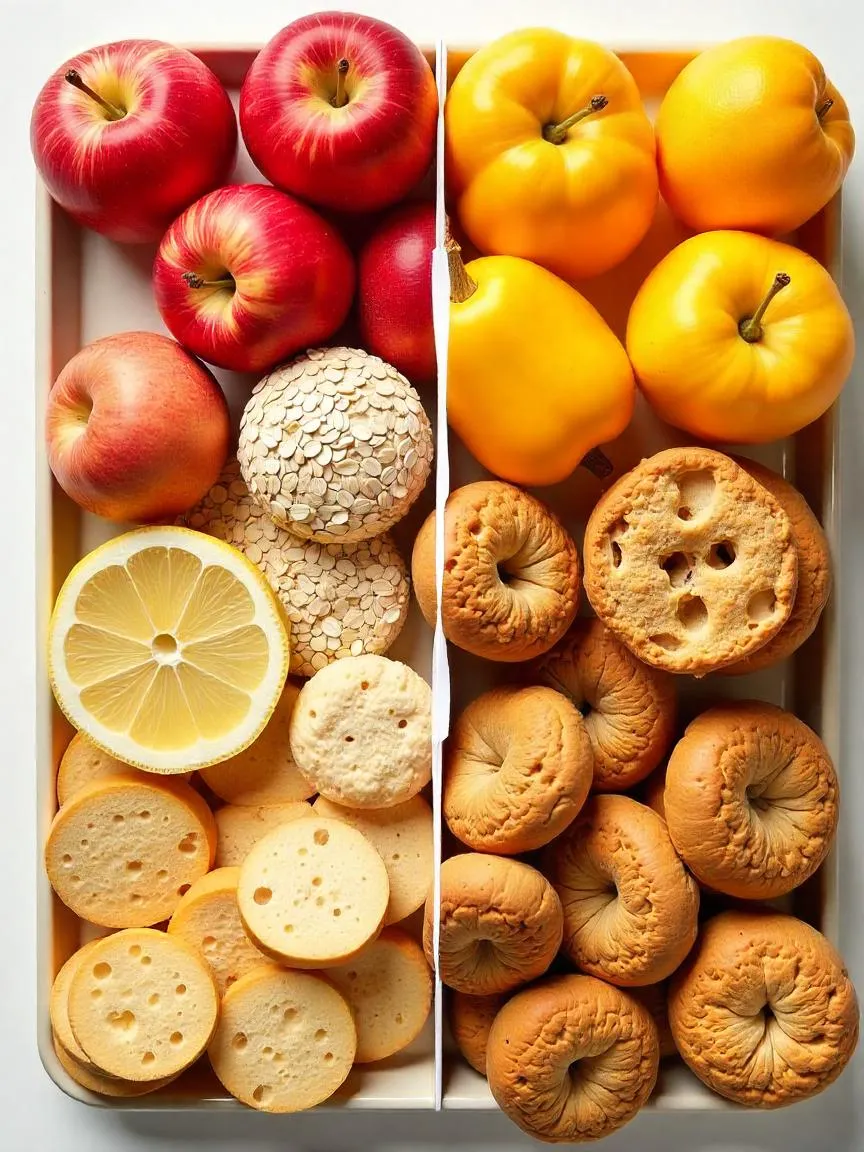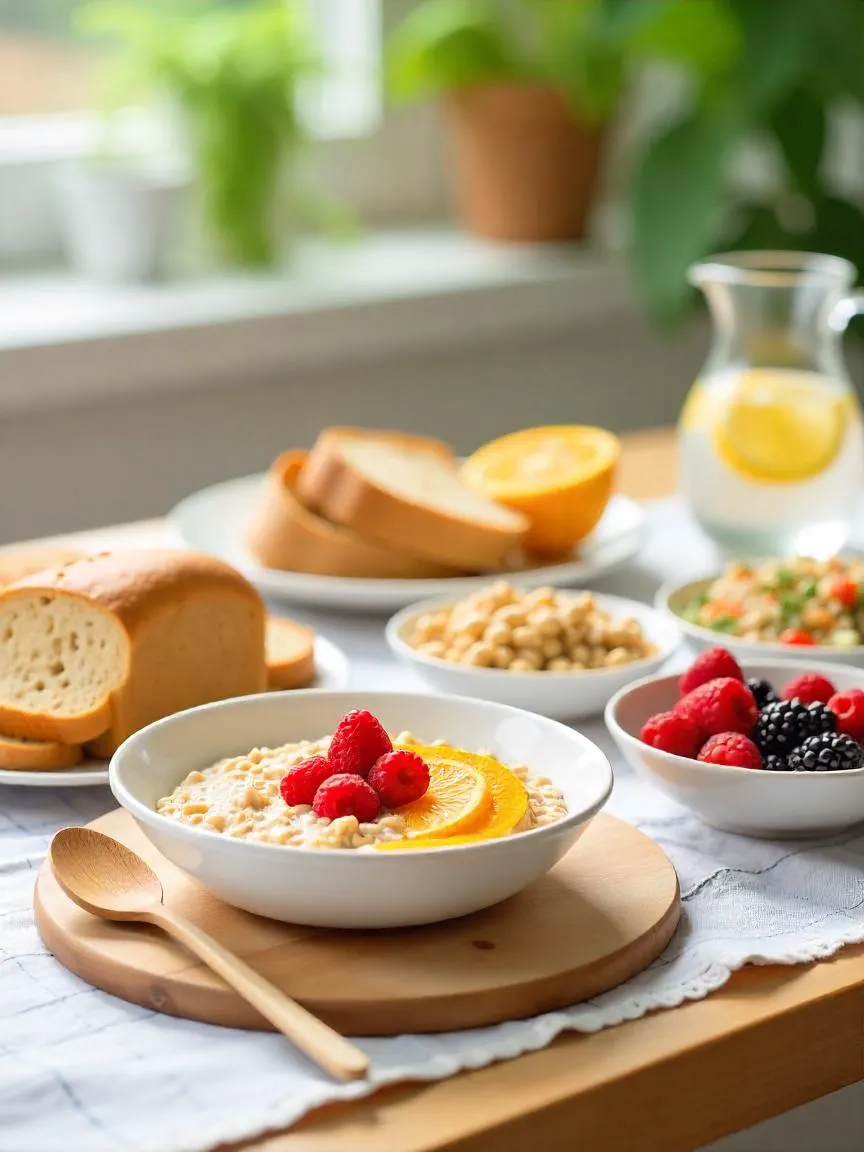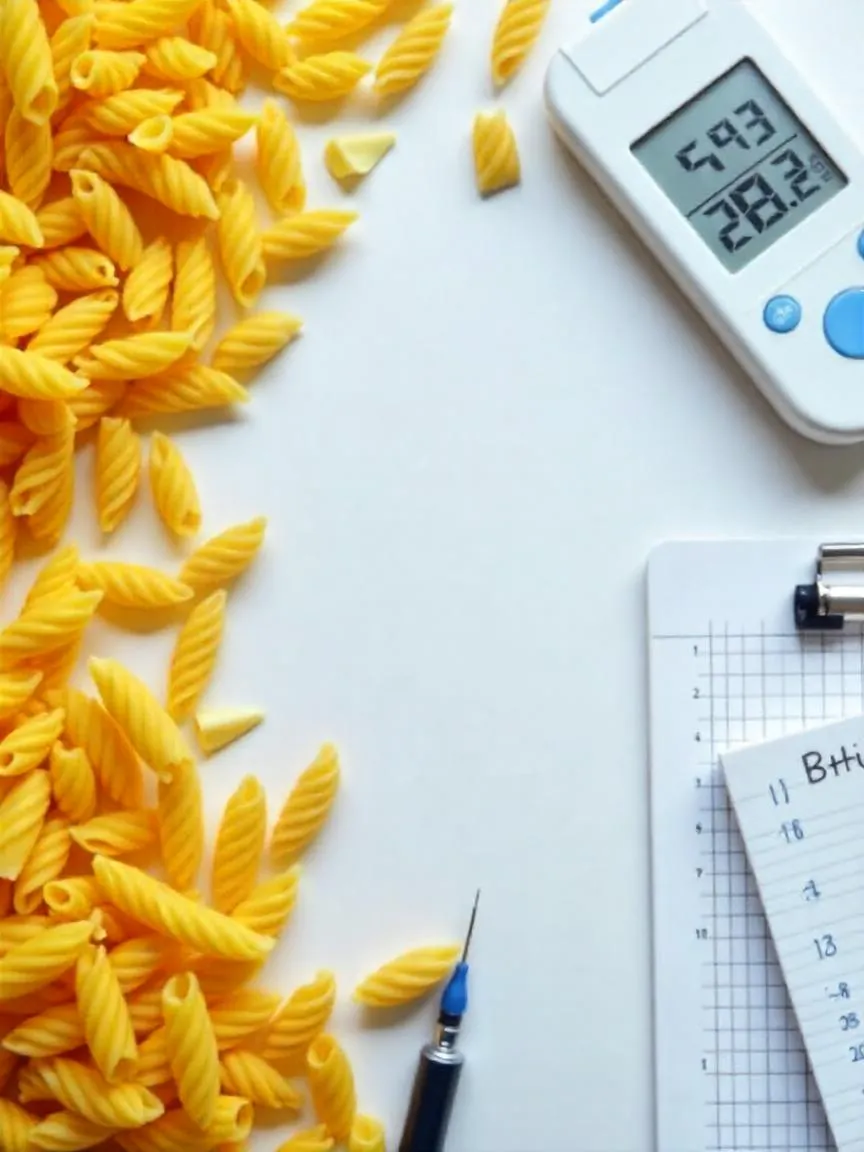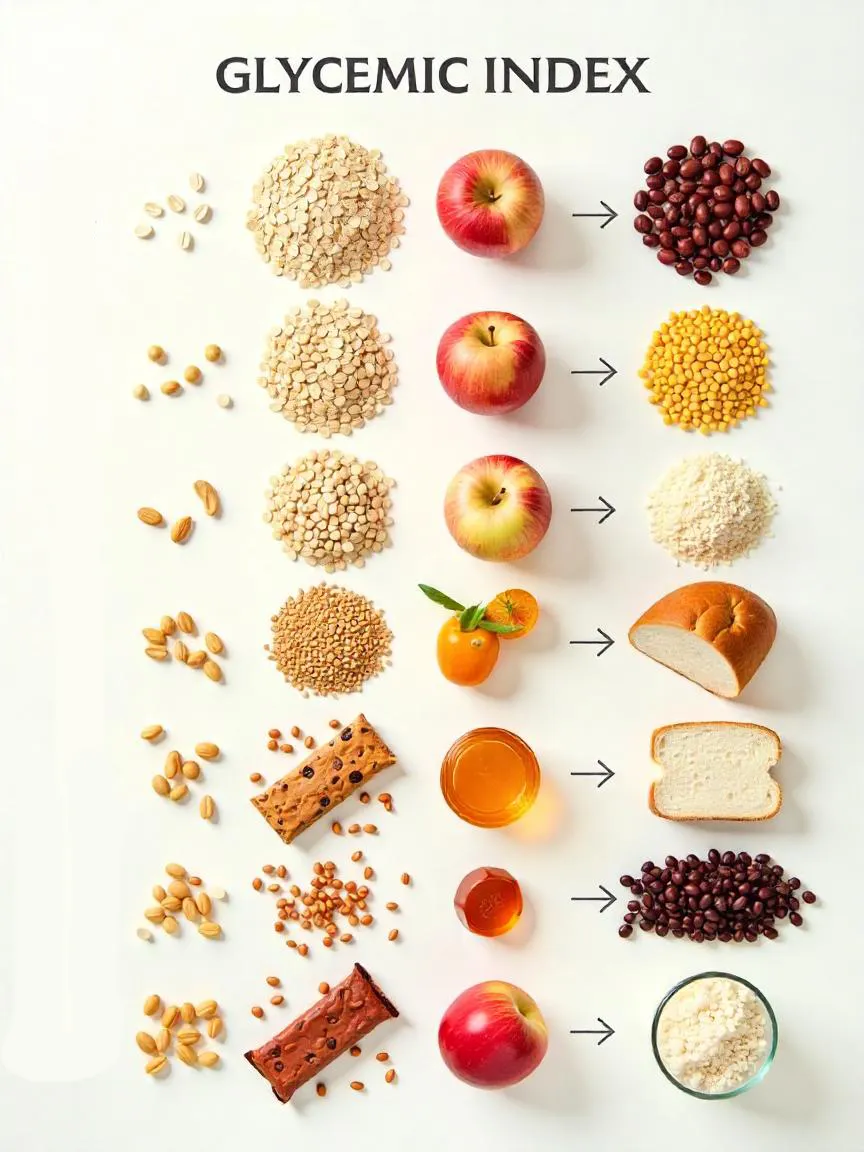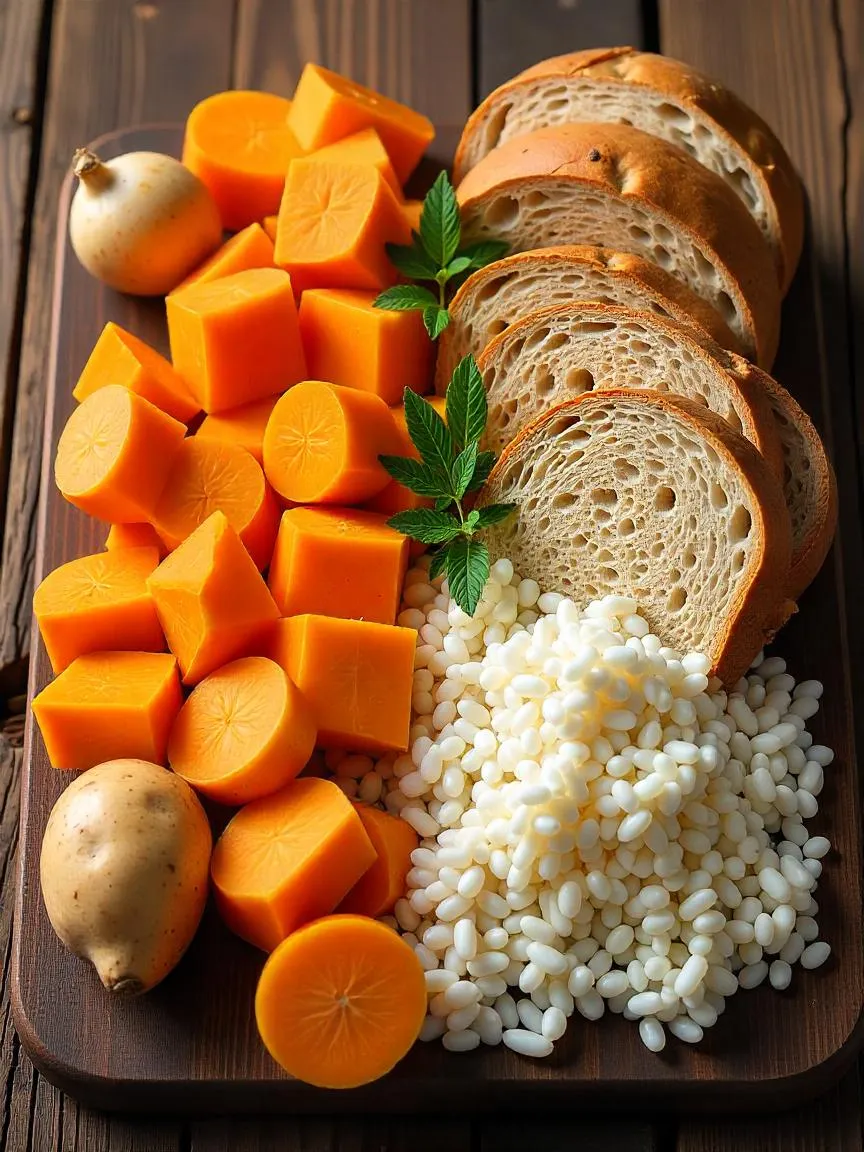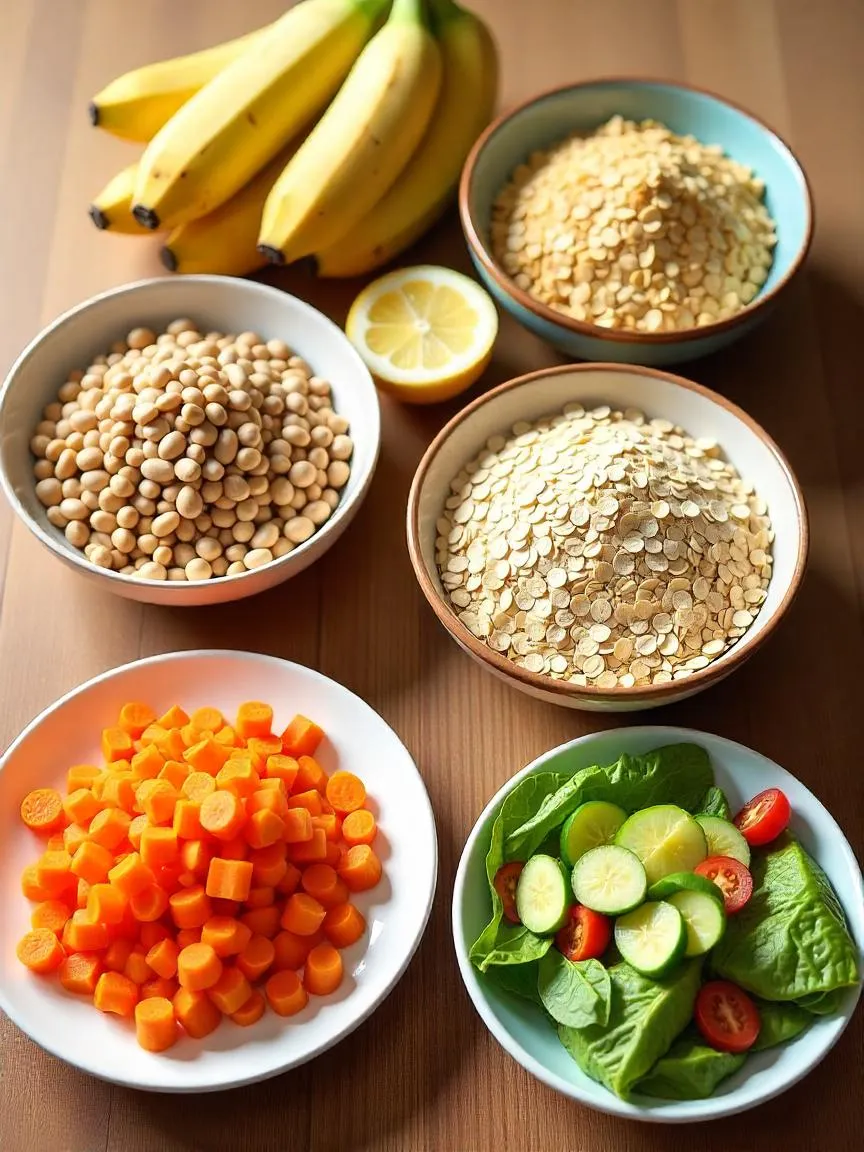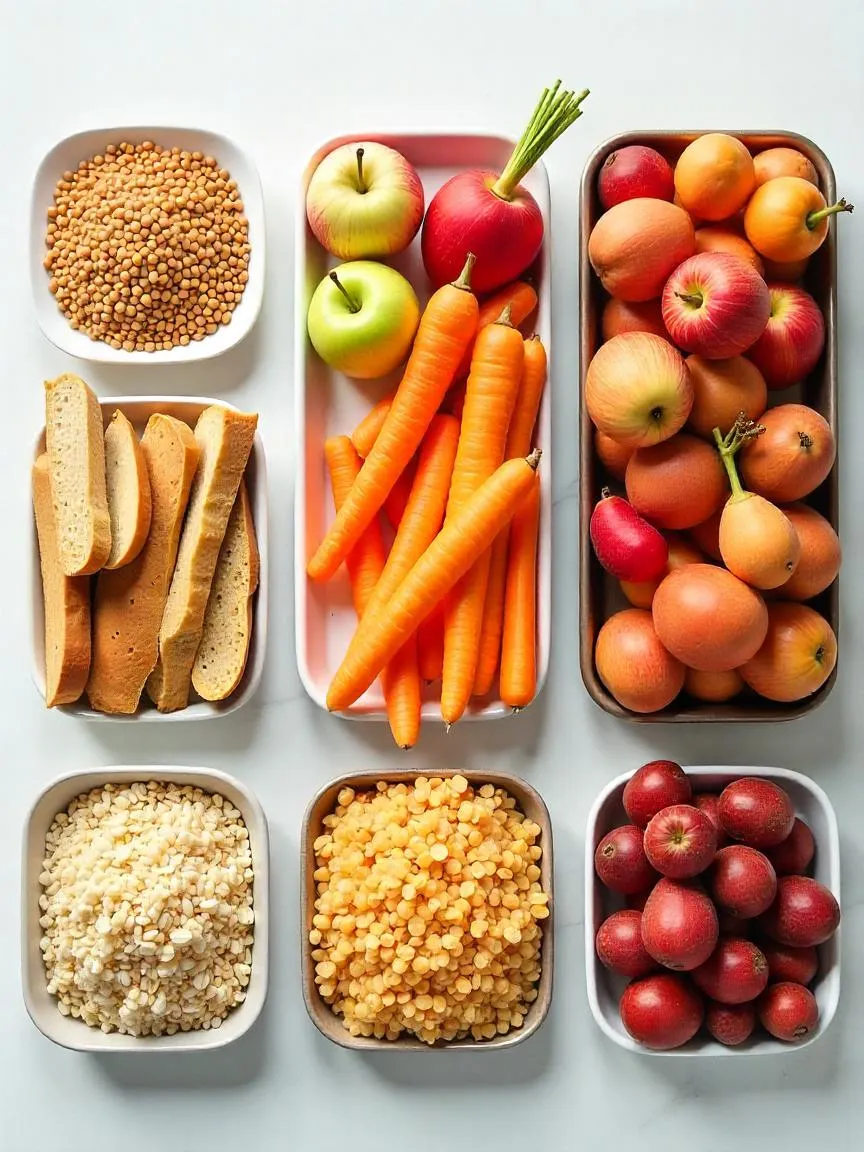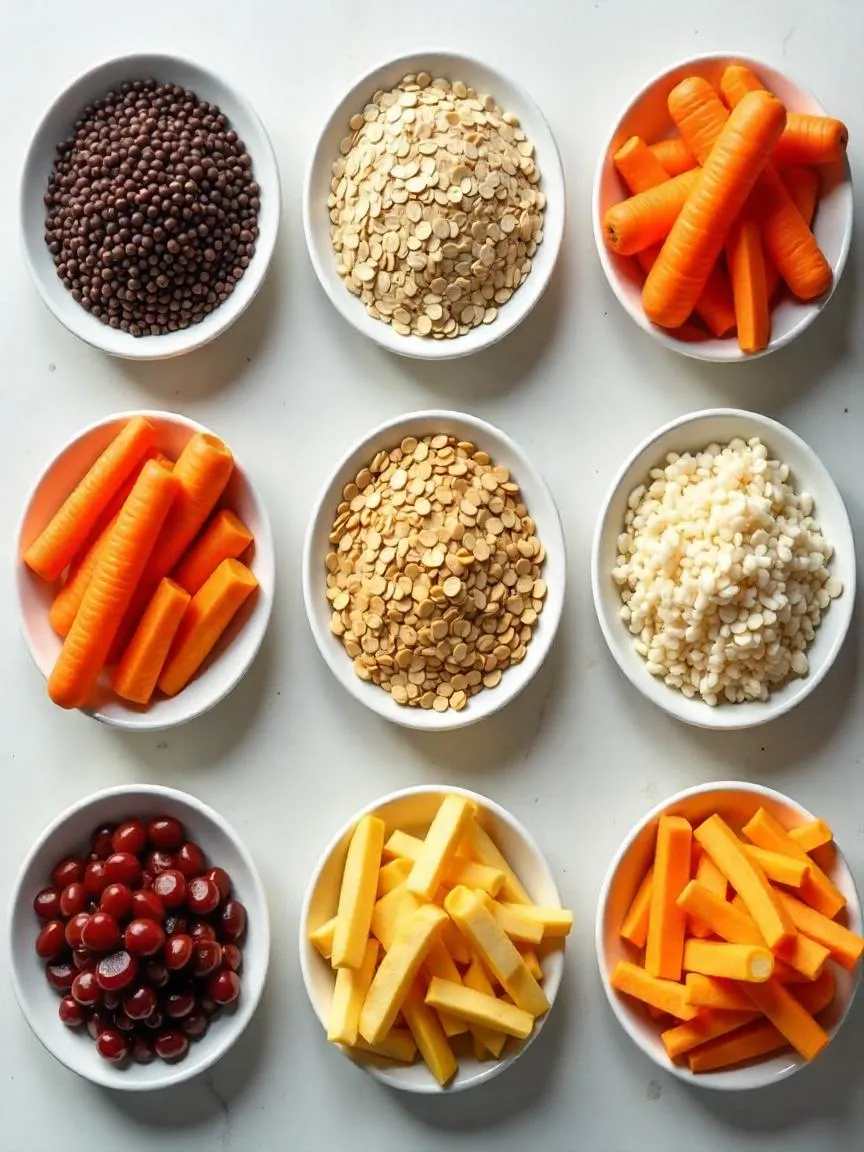Contents
Carbohydrates are one of the body’s primary sources of energy, but not all carbs are created equal. What truly matters is not how many carbs you eat, but what kind.
Whole, minimally processed carbs—like vegetables, whole grains, legumes, and fruits—offer fiber, vitamins, minerals, and sustained energy. In contrast, highly refined or processed carbohydrates like white bread, sugary cereals, or pastries are quickly digested, spike blood sugar, and offer little nutritional value.
Many popular diets have demonized carbohydrates, but carbs themselves aren’t the problem—the quality of the source is what counts.
Rather than cutting carbs completely or obsessing over grams, focus on choosing high-quality, nutrient-dense carbohydrate sources. The goal is a balanced plate, not carb-phobia.
🍞 What Are Carbohydrates?
Carbohydrates are a major nutrient found in a wide range of foods—from the wholesome to the highly processed. You’ll find them in fruits, vegetables, beans, milk, pasta, popcorn, bread, sodas, and yes—even cherry pie.
Carbohydrates exist in several forms, with sugars, starches, and fibers being the most common. When consumed, most carbohydrates are broken down into glucose, which serves as the body’s primary fuel source for essential functions and physical activity.
But not all carbs nourish the body equally.
- ✅ Healthy carbohydrate sources include minimally processed whole grains, vegetables, fruits, and legumes. These foods deliver a rich package of fiber, vitamins, minerals, and phytonutrients that support long-term health.
- ❌ Unhealthy sources include refined grains and added sugars—like white bread, pastries, sodas, and sugary snacks. These carbs are rapidly digested, spike blood sugar, and contribute to weight gain and chronic diseases like type 2 diabetes and heart disease.
According to the Healthy Eating Plate, your meals should feature mostly healthy carbs:
- 🥦 Vegetables and fruits: Fill half your plate.
- 🌾 Whole grains: Fill about one-quarter of your plate.
The takeaway? Carbohydrates are essential—but quality is key.
✅ Tips for Adding Healthy Carbohydrates to Your Diet
Making smart carbohydrate choices doesn’t require drastic changes—just a few thoughtful swaps can go a long way in supporting your energy, digestion, and overall health.
Here are 5 simple ways to incorporate high-quality carbs into your meals:
1. Start the Day with Whole Grains
🥣 Ditch instant oatmeal and sugary cereals. Instead, choose steel-cut or old-fashioned oats, or a cold cereal that lists a whole grain as the first ingredient and contains:
- ≥ 4 grams of fiber
- ≤ 8 grams of sugar per serving
2. Choose Whole Grain Breads for Lunch or Snacks
🍞 Not all breads are created equal. Look for ones that list “whole wheat,” “whole rye,” or another whole grain first. Even better: choose 100% whole grain varieties to get the most nutritional value.
3. Go Beyond the Bread Aisle
🥗 Whole wheat bread is often made with finely ground flour and can be high in sodium. Add variety by using whole grains like quinoa, farro, or brown rice in grain bowls and salads.
4. Pick Whole Fruits Instead of Juice
🍊 A whole orange contains twice the fiber and half the sugar of a 12-ounce glass of orange juice. Choosing whole fruit supports digestion and keeps you full longer.
5. Pass on Potatoes—Bring on the Beans
🥔➡️🫘 While potatoes are a starchy carb that may contribute to weight gain, beans and legumes like lentils and chickpeas offer slow-digesting carbs + plant-based protein, making them a more balanced and filling choice.
🩸 Carbohydrates and Blood Sugar: A Delicate Balance
When you eat carbohydrates, your body gets to work breaking them down into glucose (sugar), which enters the bloodstream and becomes your body’s main source of energy. But maintaining steady blood sugar levels involves a finely tuned hormonal dance:
🔁 The Blood Sugar Cycle
- Carb-rich food → glucose in the blood
Digestion converts digestible carbs into glucose, which raises blood sugar levels. - Pancreas releases insulin
In response to rising glucose, insulin is released to help cells absorb sugar for energy or storage. - Blood sugar drops → pancreas releases glucagon
As sugar levels fall, glucagon prompts the liver to release stored glucose, keeping your brain and body fueled.
⚠️ What Goes Wrong in Type 2 Diabetes?
Over time, if cells stop responding well to insulin (a condition called insulin resistance), sugar stays in the blood longer than it should. This leads to:
- Chronically high blood sugar and insulin levels
- Increased stress on the pancreas to produce even more insulin
- Eventually: insulin-producing cells wear out, and insulin production declines
This gradual process contributes to the development of type 2 diabetes—a condition that affects how the body regulates and uses glucose for energy.
📊 Glycemic Index: A Better Way to Classify Carbs
For years, carbohydrates were grouped into simple or complex categories:
🧁 Simple Carbohydrates
These include sugars like glucose, fructose, and sucrose, which are made of one or two sugar units. Because of their simple chemical structure, they are rapidly digested and absorbed, causing a quick spike in blood sugar and insulin levels. This rapid response can contribute to energy crashes, increased hunger, and over time, higher risk of insulin resistance and type 2 diabetes.
But this classification doesn’t tell the whole story.
🍞 Complex Carbohydrates ≠ Always Healthy
Complex carbs (made of long chains of sugar molecules) were once assumed to be healthier. But some highly processed complex carbs—like white bread or instant rice—act just like simple sugars in the body. They are broken down quickly and can cause similar spikes in blood glucose.
So how can we better measure how carbs affect our blood sugar?
🌡️ Enter the Glycemic Index (GI)
The Glycemic Index ranks carbohydrates based on how quickly and how much they raise blood glucose levels after eating. Foods are scored on a scale of 0 to 100:
- Low GI (55 or less): Slow, steady rise in blood sugar (e.g., lentils, most fruits, whole oats)
- Medium GI (56–69): Moderate effect (e.g., brown rice, sweet corn, whole wheat bread)
- High GI (70+): Fast rise in blood sugar (e.g., white bread, cornflakes, potatoes)
⚖️ Why GI Matters
Eating low-GI foods can help:
- Improve blood sugar control
- Reduce hunger and cravings
- Lower the risk of type 2 diabetes and heart disease
However, GI isn’t the whole picture. The Glycemic Load (GL) also considers portion size—coming up next if you’d like to continue.
Here is your revised and polished section on Complex Carbohydrates and the Glycemic Index, organized for clarity and readability:
🍠 Complex Carbohydrates: Not Always Created Equal
Complex carbohydrates are made up of longer chains of sugar molecules—called oligosaccharides and polysaccharides—which are found in foods like legumes, whole grains, and vegetables. These foods typically contain fiber, vitamins, and minerals, and take longer to digest, resulting in a slower rise in blood sugar.
However, not all complex carbohydrates are beneficial.
🧐 Some complex carbs, like white bread and white potatoes, are composed mostly of refined starch with little fiber or nutrition. Despite their complex structure, they are rapidly digested and act similarly to simple sugars in the body.
📈 Beyond “Simple vs. Complex”: The Glycemic Index (GI)
To better reflect how carbohydrate-rich foods affect blood sugar, scientists developed the Glycemic Index (GI). This system ranks foods on a scale of 0 to 100 based on how quickly and how much they raise blood glucose after eating:
- Low GI (≤ 55): Slow digestion, gradual rise in blood sugar
Examples: steel-cut oats, lentils, non-starchy vegetables - Medium GI (56–69): Moderate effect
Examples: brown rice, whole wheat bread - High GI (≥ 70): Rapid digestion, sharp blood sugar spikes
Examples: white bread, instant rice, cornflakes
🚨 Health Effects of High-GI Foods
Consistently eating high-GI foods has been associated with:
- Increased risk of type 2 diabetes
- Higher likelihood of heart disease
- Greater weight gain and obesity risk
- Possible links to:
- Age-related macular degeneration
- Ovulatory infertility
- Colorectal cancer
🌾 Benefits of Low-GI Eating
Diets rich in low-glycemic foods have been shown to:
- Support better blood sugar control
- Aid in weight management
- Reduce inflammation
- Improve metabolic health, particularly in those with or at risk of type 2 diabetes
🧬 What Affects a Food’s Glycemic Index?
The glycemic index (GI) of a food isn’t set in stone—it can vary based on several factors that influence how quickly the body digests and absorbs carbohydrates:
🔧 1. Processing
Refining grains by removing the bran and germ (as in white rice or white flour) significantly raises the GI, because it strips away fiber and nutrients that slow digestion.
✅ Whole grains in their natural state (like barley or quinoa) have a lower GI than refined grains like white bread.
🧱 2. Physical Form
The texture of a food matters. The finer the grind, the faster it’s digested.
✅ For example, steel-cut oats have a lower GI than instant oats, and whole wheat kernels beat whole wheat bread.
🌾 3. Fiber Content
Foods rich in dietary fiber, especially soluble fiber, slow the digestive process and reduce the glycemic response.
✅ Think legumes, vegetables, and intact whole grains—they naturally moderate blood sugar spikes.
🍌 4. Ripeness
The riper a fruit or vegetable, the higher its sugar content—which increases its glycemic index.
✅ A green banana has a lower GI than a fully ripe one.
🧈 5. Fat and Acid Content
Meals that include fat or acid (like vinegar or lemon juice) slow stomach emptying, which leads to a slower rise in blood sugar.
✅ Pairing bread with olive oil or adding lemon to a salad can help lower the overall GI of the meal.
📊 Glycemic Index and Disease Risk
Numerous epidemiologic studies have found that:
- A higher dietary GI is linked to increased risk of type 2 diabetes and coronary heart disease.
- The relationship between GI and body weight, however, is still unclear and under debate.
📉 Glycemic Load: A More Complete Picture
While the glycemic index (GI) measures how quickly a food raises blood sugar, it doesn’t account for the quantity of carbohydrates in a typical serving. That’s where glycemic load (GL) comes in.
🔢 What Is Glycemic Load?
Glycemic Load (GL) =
Glycemic Index (GI) × grams of digestible carbohydrate per serving
➗ 100
This calculation gives a more accurate reflection of how a typical serving of food will impact blood sugar levels.
📊 Interpreting Glycemic Load
- Low GL: 10 or less
- Medium GL: 11 to 19
- High GL: 20 or more
✅ GL accounts for both the quality and quantity of carbohydrates in a food.
📚 What Does the Research Say?
- A large meta-analysis of 24 prospective cohort studies found that low-GL diets are associated with a reduced risk of developing type 2 diabetes.¹³
- Another meta-analysis showed a clear link between high-GL diets and increased risk of coronary heart disease.¹⁴
🍽️ Examples of Glycemic Load by Food Type
| Food | Typical Serving | Glycemic Load |
|---|---|---|
| Apple | 1 medium | 6 (Low) |
| Watermelon | 1 cup diced | 5 (Low, despite high GI) |
| Brown rice | 1 cup cooked | 16 (Medium) |
| White bread | 1 slice | 10–14 (Medium–High) |
| Baked potato | 1 medium | 29 (High) |
| Cornflakes | 1 cup | 21 (High) |
✅ Takeaway
Glycemic load gives a more realistic measure of a food’s impact on blood sugar.
Aim to build meals around low to medium GL foods, and limit high-GL items to reduce your risk of diabetes and heart disease.
🍽️ Glycemic Load of Common Foods
Choose more low- and medium-glycemic load foods for better blood sugar control and chronic disease prevention.
✅ Low Glycemic Load (10 or under per serving)
These foods have a minimal effect on blood sugar:
- Bran cereals
- Apple
- Orange
- Kidney beans
- Black beans
- Lentils
- Wheat tortilla
- Skim milk
- Cashews
- Peanuts
- Carrots
⚖️ Medium Glycemic Load (11–19 per serving)
These foods raise blood sugar moderately:
- Pearled barley – 1 cup, cooked
- Brown rice – ¾ cup, cooked
- Oatmeal – 1 cup, cooked
- Bulgur – ¾ cup, cooked
- Rice cakes – 3 cakes
- Whole grain breads – 1 slice
- Whole-grain pasta – 1¼ cup, cooked
❌ High Glycemic Load (20+ per serving)
These foods spike blood sugar and should be limited:
- Baked potato
- French fries
- Refined breakfast cereal – 1 oz
- Sugar-sweetened beverages – 12 oz
- Candy bars – 1 bar (2 oz) or 3 mini bars
- Couscous – 1 cup, cooked
- White basmati rice – 1 cup, cooked
- White-flour pasta – 1¼ cup, cooked


